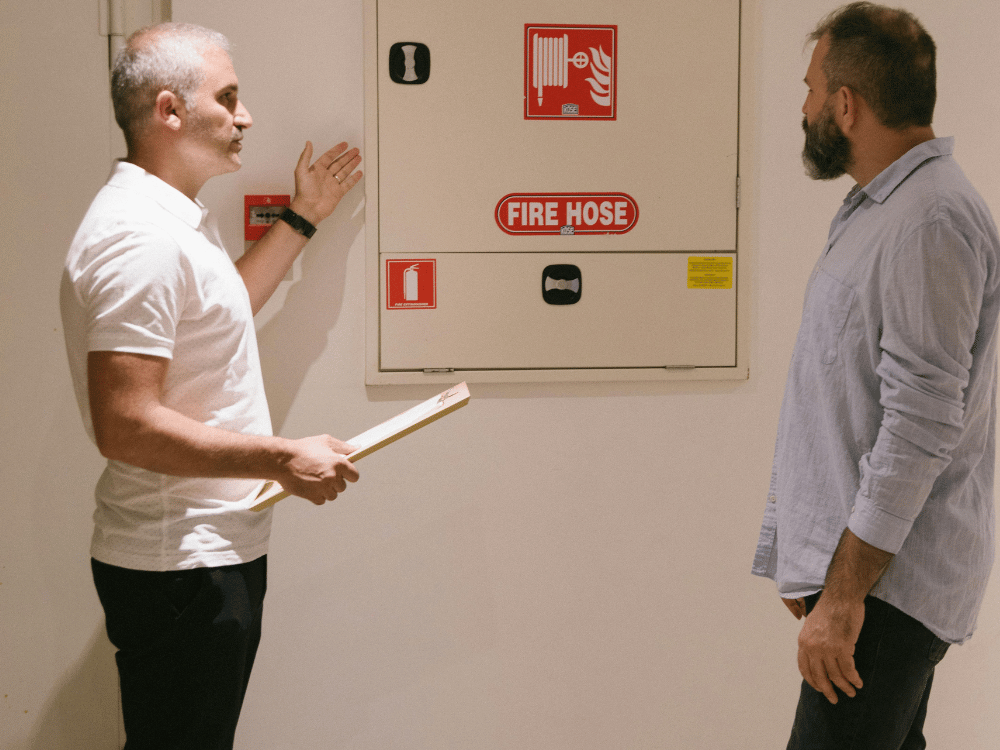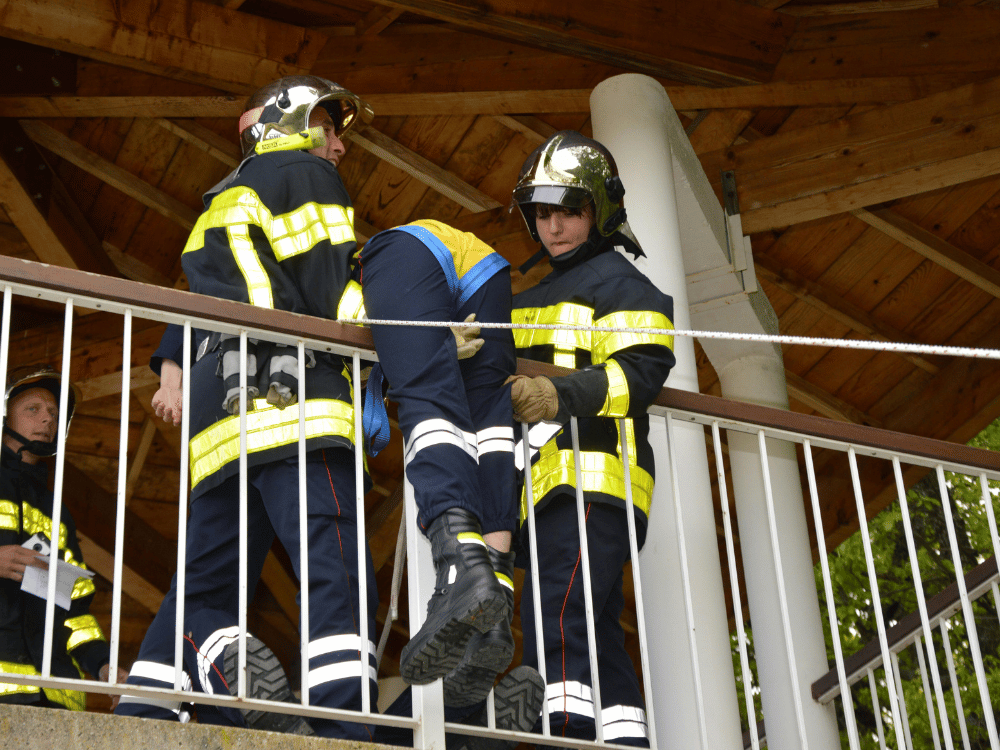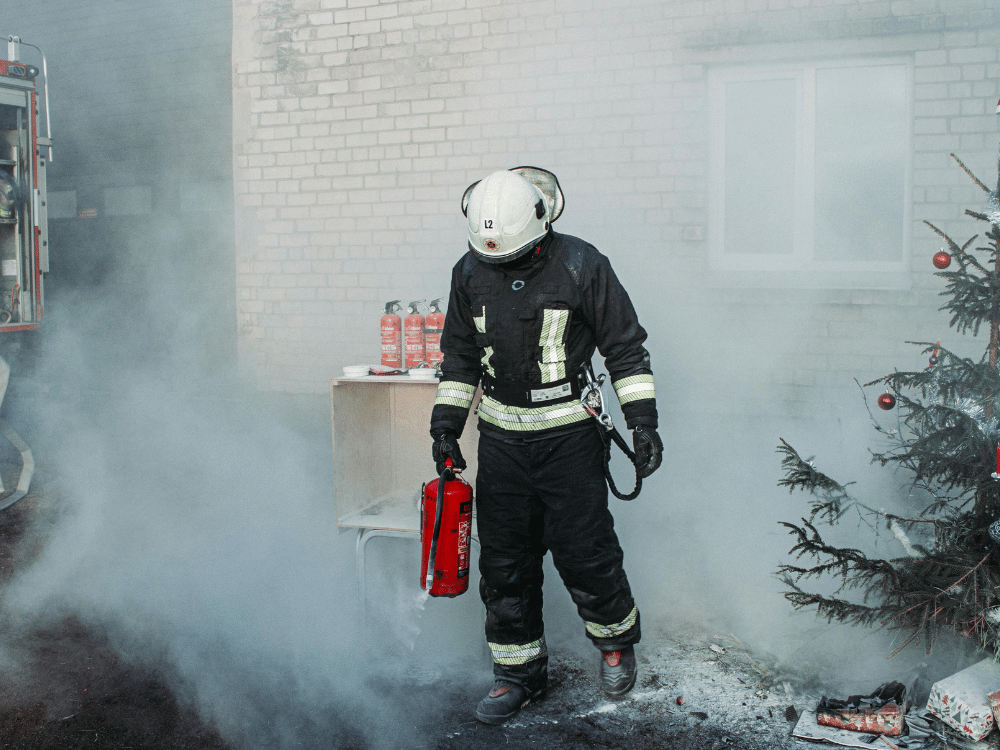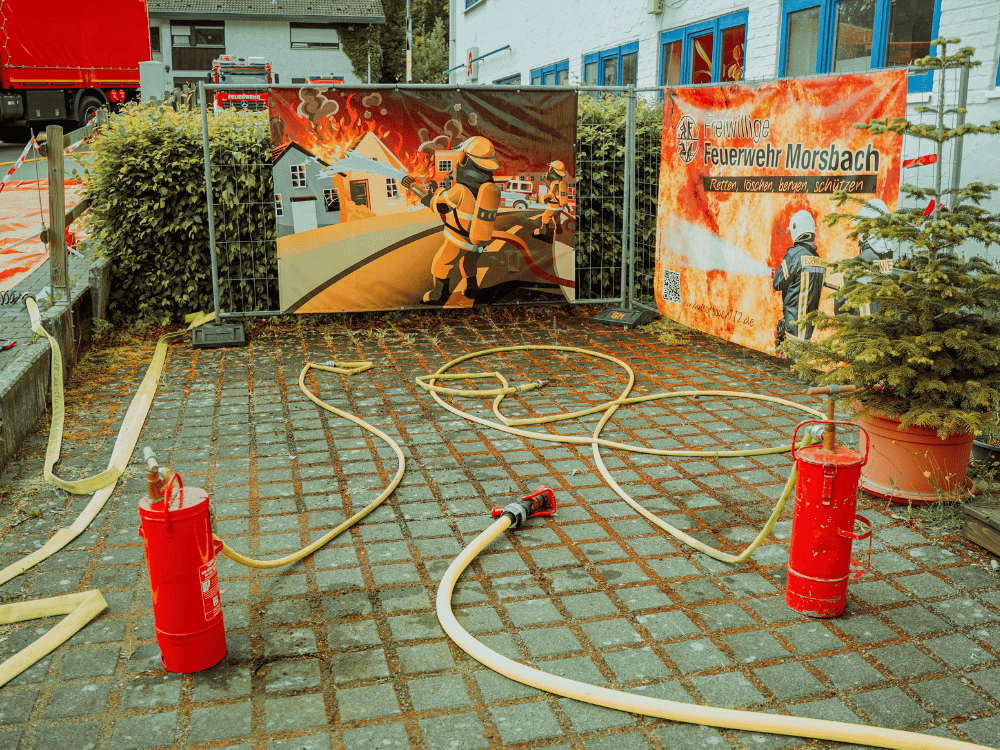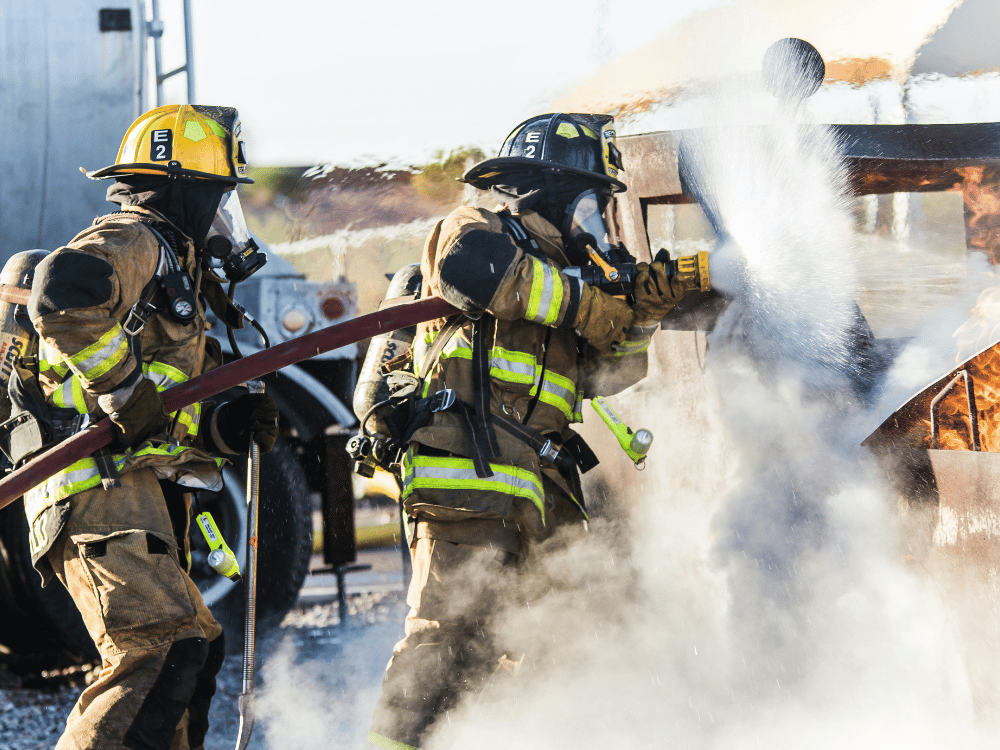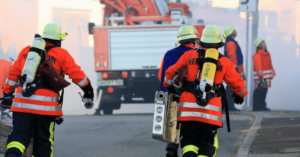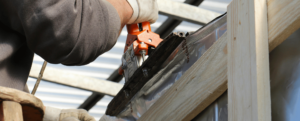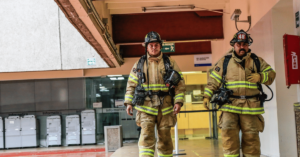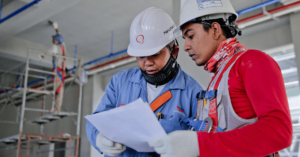According to Government statistics, there were over 280 fire-related fatalities in UK workplaces last year alone.
Numbers like this demonstrate the importance of completing a regular fire risk assessment in your business.
But what is included in a fire risk assessment? How regularly do you need to schedule them? And how can passing a NEBOSH National General Certificate with TSW Training qualify your team to be able to carry them out legally?
What is a Fire Risk Assessment?
When it comes to fire safety in the workplace, fire risk assessments are a set of checks completed by a competent person to establish the risk of a fire occurring on your premises.
Just like in standard workplace risk assessments, a fire risk assessment should include the identification of fire hazards and risks and listing actions to mitigate risks going forward to help make the premises safer.
Additionally, the UK Government highlights that companies with more than five employees should keep a record of checks.
Types of Fire Risk Assessment
Every fire risk assessment aims to develop your premises’ overall safety.
However, there are four different types of checks to be aware of. Each overview develops in terms of comprehensiveness as it increases the area you’re assessing.
Type 1 Fire Risk Assessment
A type 1 overview is the most basic check recognised under the Fire Safety Order 2005.
Defined as a “non-destructive” inspection, this analysis looks specifically at emergency escape routes and exits.
The checks will also overview the efficacy of emergency preparedness and evacuation plans. Some checks in type 1 assessments can also review false ceilings.
Type 2 Fire Risk Assessment
Also known as “destructive” tests, type 2 assessments involve accessing certain areas of the premises to check their fire rating.
Specialist contractors may be required to carry out these inspections and complete the necessary repair works once completed.
Type 3 Fire Risk Assessment
Type 3 fire risk assessments involve checking individual rooms or flats in a block, as well as the common areas.
The review will also check the maintenance of fire alarm systems and other warning systems.
Type 4 Fire Risk Assessment
As the most comprehensive fire safety risk assessment that can be carried out, type 4 checks bring together elements of all other assessments, helping them become as in-depth as possible.
Not only do these checks review individual flats in a block and common areas, but they can also involve destructive testing.
How Many Steps Make Up a Fire Safety Risk Assessment?
As mentioned earlier, the fire risk assessment must cover the following 5 steps to represent a robust overview.
1. Hazard Identification
The first step in a fire risk assessment is to establish where any hazards occur. Appropriate training, like the NEBOSH National General Certificate, can help increase your knowledge of hazard awareness.
2. Identify Who is at Risk
The second step of a fire risk assessment requires assessors to define who would be at risk should a fire occur. This can help define the level of risk associated with that particular location.
3. Evaluate and Remove Risks
Once you have identified the hazards and defined who is at risk, it’s time to remove or at least mitigate those risks. Removing any potential ignition sources is one example of how risks can be removed from the space.
4. Record Findings
As we outlined earlier, the UK Government mandates:
“You must keep a written record of your fire risk assessment if your business has 5 or more people.”
5. Schedule Follow-up Reviews
Article 9 of the Fire Safety Order 2005 (FSO) highlights that the responsible person (employer or building owner) must arrange and keep a record of scheduled fire risk assessments.
Is a Fire Risk Assessment a Legal Requirement?
As mentioned above, Article 9 of the FSO puts into writing the requirement for business owners to schedule regular fire safety checks.
When is a Fire Risk Assessment Required?
That important legislation also mandates that assessments must be scheduled if the employer has reason to suspect that the previous check is no longer valid or when:
“There has been a significant change in the matters to which it relates, including when the premises, special, technical and organisational measures, or organisation of the work undergo significant changes, extensions, or conversions.”
That language is quite blurry, so we’ll clarify more shortly. But first, let’s further define how often assessments are necessary in a domestic setting vs. the workplace.
How Often Should a Fire Risk Assessment be Reviewed?
The law has subtle nuances regarding the requirements for fire risk assessments in the home and in a business setting.
How Often Should a Fire Risk Assessment Be Carried Out in the Workplace?
To further qualify that quote from Article 9, the responsible person should schedule fire risk assessments at least once a year.
However, you should also consider organising an inspection in the following circumstances:
- Before opening new premises (this is also where having a fire strategy plan is crucial)
- Following extensive building work or a property extension
- Following business growth periods, including large staff intakes
- After purchasing new equipment
- Before any changes in normal business activity
How Often Should a Fire Risk Assessment Be Carried Out on Flats?
There is no specific legislation defining how often fire risk assessments must be carried out in domestic settings.
However, governmental advice on fire safety in purpose-built blocks of flats highlights that low-rise blocks (up to three storeys) built in the last 20 years should be reviewed every two years and retaken every four years.
Meanwhile, blocks with more than three storeys (or old buildings) should schedule annual reviews and complete new fire risk assessments every three years.
Who Can Do a Fire Risk Assessment? Who Is Responsible For Completing A Fire Risk Assessment?
The FSO dictates that it’s the responsibility of the business/property owner or employer to schedule regular fire risk assessments.
However, the law is not as specific regarding defining who can carry out the checks.
Moreover, the current legislation simply mandates that the assessor be a competent person—someone who is suitably trained.
As a business owner, you can pay for expert third-party consultants to conduct your inspection. Alternatively, you do have the option to complete the necessary reviews yourself.
Can You Do Your Own Fire Risk Assessment?
You can carry out your own fire risk assessments. However, to do this, you must have completed the relevant training.
Business owners can make themselves or a Line Manager (for example) a ‘competent person’ by completing the NEBOSH National General Certificate.
Vital health and safety training courses like this NEBOSH qualification give you or your staff the requisite knowledge to spot and manage risks in the workplace. Thus, this can make them competent enough to complete the mandated safety checks.
Where Can I Get Fire Risk Assessment Training?
Fire risk assessment training can be an investment in you or your team. But you don’t need to spend big on several qualifications.
Instead, you could enlist the help of TSW Training and our 99%+ pass rate to bring your team completely up to speed with the regulations.
The NEBOSH National General Certificate is a great starting point for those wanting to begin a career in health and safety. But it can also act as the perfect skill for completing fire risk assessments on your premises.
Fire Risk Assessment Checklist
The Government’s fire risk assessment checklist calls for assessors to review these areas:
- Electrical installations or equipment
-
-
- Are installations fixed? If so, are they inspected every five years?
- Are electrical equipment and appliances tested regularly?
- Are trailing leads and adaptors avoided where possible?
-
- Smoking
-
-
- Are there adequate measures in place to stop people smoking on the premises?
- “No Smoking” signs in place?
- Are suitable arrangements made outside for those who wish to smoke?
-
- Arson
-
-
- Are the premises adequately secured?
- What checks are in place to battle unauthorised access?
- Are combustible materials and bins stored safely and securely?
- Are hazardous substances stored correctly and per COSHH guidelines?
-
- Heating systems and heaters
-
-
- Are heaters (both fixed and portable) subjected to regular maintenance?
-
- Cooking
-
-
- Are adequate measures taken to prevent fires when cooking?
- Filters and ductwork are subject to regular maintenance
-
- Housekeeping
-
- Do the levels of housekeeping prevent build-ups of combustible materials and waste?
- Is care taken to keep combustible materials separate from ignition sources?
- What checks are in place to verify contractor competence?
-
- Are there any other significant fire hazards on the premises?
How Much Does a Fire Risk Assessment Cost?
The cost of a fire risk assessment can vary depending on the person completing the checks. Fees can increase if you hire specialist third-party consultants to complete the inspection.
The size and complexity of the premises and the type of assessment required can also cause the costs to fluctuate.
However, business or property owners can expect to pay anywhere between £200 – £1,000.
So, if you do go down this route, how often do you need to pay out?
How Long Does a Fire Risk Assessment Last?
As we mentioned previously, no laws dictate how often fire risk assessments should be completed.
However, a good rule of thumb for companies is to carry out annual checks. Or reassess after any extensive building growth or construction projects.
Meanwhile, when it comes to domestic settings and purpose-built flats, the answer very much depends on the size and age of your property.
Conclusion
Fire risk assessments are crucial to fire safety protocols in businesses and domestic settings.
However, owners can save time and money by bringing fire safety knowledge in-house rather than sourcing and spending on third-party consultants to complete their checks.
By completing NEBOSH National General Certificate training with TSW, you can give your team the knowledge they need to keep your premises up to code. No more costly annual inspections!

